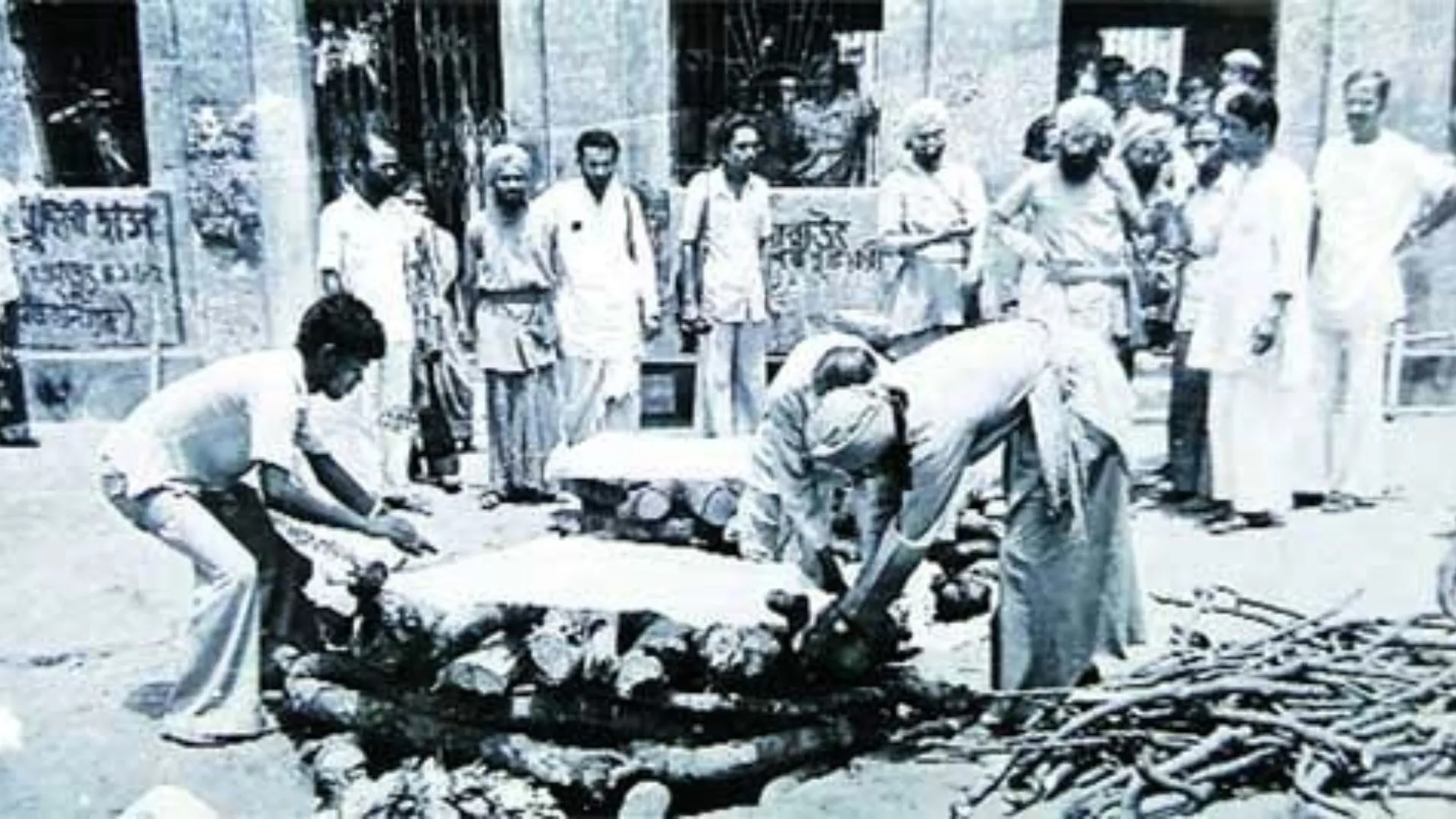On the morning of April 30, 1982, a horrifying scene unfolded near the Bijon Setu bridge in Kolkata, West Bengal. In one of the most brutal and underreported incidents in post-independence India, 16 monks (Sadhus) and one nun (Sadhvi) belonging to the socio-spiritual organisation Ananda Marga were lynched and set ablaze by a violent mob in broad daylight. Despite the carnage taking place in a public space near Ballygunge, a crowded urban area, not a single person was arrested or held accountable—even 43 years later.
Today in history: The Bijon Setu massacre: 43 years ago, 16 Sadhu (monks) & a Sadhvi (nun) of Ananda Marga were killed & burnt at Bijon Setu, near Ballygunge, Kolkata, in West Bengal on 30 April 1982. Although attacks were carried out in broad daylight, no arrests were ever made. pic.twitter.com/8PXsbnGBMd
— Gujarat History (@GujaratHistory) April 30, 2025
What Happened at Bijon Setu?
The victims were travelling in taxis towards an Ananda Marga gathering when they were stopped by a mob near the Bijon Setu overpass. Within moments, the monks and the lone nun were dragged out, brutally beaten, and then set on fire while still alive. The attackers alleged that the members of Ananda Marga were responsible for the murder of a student earlier, though there was no substantial evidence or due legal process involved. The killings appeared more like a premeditated act of mob justice, encouraged by rumours and underlying political tensions.
Witnesses reported that the police were either absent or passive observers. Several accounts also pointed to the presence of political backing or at least silent consent, given the tense political climate in West Bengal during the early 1980s, when the CPI(M)-led Left Front government held power.

Political and Legal Vacuum
The massacre has remained shrouded in silence, with no arrests, no convictions, and no official closure. The political establishment of the time never initiated a thorough investigation, and successive governments also failed to revisit the case. Inquiries were limited and inconclusive. Activists and surviving members of Ananda Marga have consistently claimed that the attack was orchestrated with the knowledge or support of local political elements who viewed the group as a threat.
In 1997, the National Human Rights Commission (NHRC) took note of the incident and demanded a report, but the case went no further. Appeals by human rights groups and members of the Ananda Marga Pracaraka Samgha have continued over the decades, but justice remains elusive.
A Forgotten Chapter
What makes the Bijon Setu massacre especially chilling is the complete erasure of accountability. Unlike other incidents of communal or political violence in India, this tragedy has not entered the mainstream national consciousness. There are no memorials, no public commemorations, and very limited media coverage—either then or now.
For the families of the victims and the Ananda Marga community, the pain remains raw. Every April 30, they remember the monks and the lone Sadhvi who were killed in what they believe was a targeted, ideologically-driven act of mass murder.
Must Read: 21 Years Of Shah Rukh Khan’s ‘Main Hoon Na’, Netflix Shares A Comic Post






















